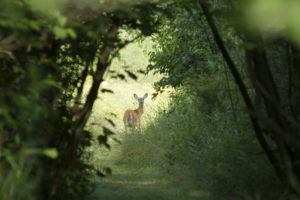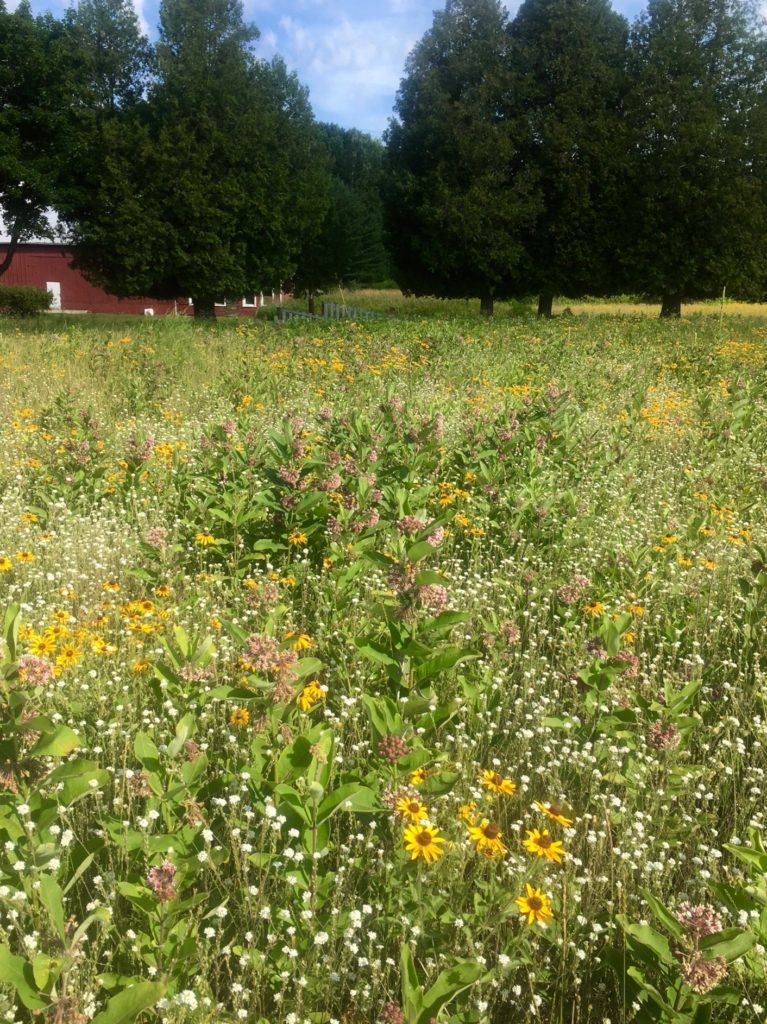Written by Jeni Klein, land management coordinator
Last week, my co-worker Nancy and I went for a hike on Willow Trail early in the morning to see what flowers were in bloom in the Steffen Prairie. On our way out we walked through “Woodcock Way,” an open area of the trail which leads to a thick arch of red-osier dogwoods.

While we didn’t hear any woodcocks calling, we did hear the “free beer” of the Alder flycatcher along with the “wichity wichity” of the Common yellowthroat. Veerys, redstarts, and catbirds also serenaded us on our hike. Near the end of the shrub tunnel we spotted a deer, which also spotted us – and checked us out with much curiosity before continuing on into the prairie and further into the woods for her breakfast.
Not wanting to feed the mosquitoes too much, we didn’t linger long before entering into the colorful world of the prairie. To our delight, spiderwort, St. John’s wort, blazing star, and brown eyed Susan’s were all in bloom. Many insects were also attracted to the flowers.
Prairie habitats are very important to many wildlife species, not only birds and insects but also mammals, reptiles, and even a snail was found enjoying the native grasses. Here at Woodland Dunes we have been increasing our prairie habitat by hundreds of acres every year.

Prairies start out in many different forms. Some areas were old prairies which needed to be revitalized. Others were farm fieldscoming out of production and returning to a more natural state. Some are what people call “old fields,” farm fields left to turn wild on their own. Often times these fields fill in with less desirable weed species. These fields were transitioned over to more high quality wildlife areas. The end result of all of these is the same; after three to five years of patience and nurturing they become wonders for both animals and people to enjoy.
As a matter of fact, later that same day a photo club from out of the area came with high end lenses to capture the beauty of the prairie. The prairie offered up various textures, colors, shadows, and other interesting features to its welcome guests. Only the deer witnessed what they ended up capturing on their cameras.
photo of deer: Nancy Nabak
photo of prairie: Jim Knickelbine
